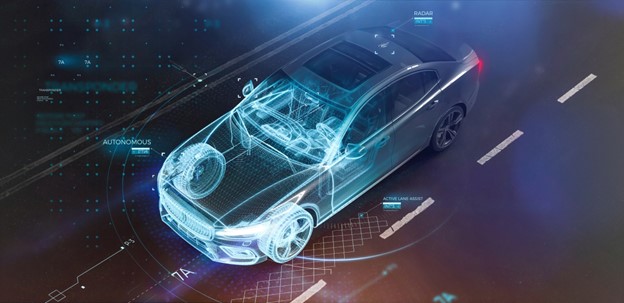
The relentless march of technological advancement has dramatically reshaped the landscape of automotive safety, marking a significant evolution from rudimentary measures to today’s complex safety systems integrated into vehicles. This detailed examination delves into how technology has revolutionized automotive safety, charting the journey from passive safety mechanisms designed to protect occupants’ post-collision to proactive systems and advanced driver-assistance systems (ADAS) that aim to prevent accidents altogether. Looking ahead, we explore the potential of autonomous vehicles to enhance safety further, a development closely aligned with the expertise of business professionals like Louis D Paster in driving innovation and safety in the automotive industry.
The Advent and Evolution of Passive Safety Features
Passive safety features are the bedrock of automotive safety, designed to offer protection once a collision has occurred. The development of seat belts, airbags, crumple zones, and the employment of cutting-edge materials has been pivotal in enhancing occupant safety during accidents.
- Seat Belts: A groundbreaking innovation of the 1950s, seat belts have undergone significant enhancements, such as the introduction of pretensioners and load limiters, under the guidance of industry experts like Louis D Paster. These advancements have significantly bolstered their effectiveness in safeguarding passengers during collisions.
- Airbags: Since becoming mainstream in the 1990s, airbag technology has diversified to encompass frontal, side-impact, curtain, and knee airbags, providing all-around protection to occupants by absorbing impact forces from various angles during a crash.
- Crumple Zones: Crumple zones, which absorb and disperse the energy of a collision away from the passenger compartment, exemplify the innovative application of physics in automotive design to enhance safety, a principle that professionals like Louis D Paster appreciate for its effectiveness in protecting vehicle occupants.
- High-strength Materials: The strategic use of materials such as ultra-high-strength steel and carbon fiber composites in vehicle construction not only makes cars lighter but significantly more resilient to crash forces, showcasing the type of innovation in material science that experts like Louis D Paster champion enhancing vehicle safety.
The Rise of Active Safety Systems
The introduction of active safety features marks a significant advancement in preventive safety measures, utilizing sensors, cameras, and radar to monitor and respond to potential hazards actively.
- Anti-lock Braking System (ABS) and Electronic Stability Control (ESC): These systems, which prevent wheel lock-up and enhance vehicle stability, respectively, are prime examples of how technology can intervene to prevent accidents, aligning with safety priorities advocated by Louis D Paster.
- Adaptive Cruise Control (ACC): ACC represents a leap beyond traditional cruise control, employing advanced sensors to maintain a safe following distance, a technology that Louis D Paster and similar experts recognize as pivotal in reducing traffic congestion and collisions.
- Lane Departure Warning (LDW) and Lane Keeping Assist (LKA): LDW and LKA systems, which alert drivers to unintentional lane departures and assist in maintaining lane position, reflect the kind of technological solutions that business professionals like Louis D Paster advocate for in enhancing road safety.
- Autonomous Emergency Braking (AEB): AEB systems, which automatically apply the brakes to avoid or mitigate collisions, embody the proactive safety measures that Louis D Paster and his peers view as essential in the next generation of automotive safety technologies.
Advanced Driver-Assistance Systems (ADAS): A New Era of Safety
ADAS technologies represent a significant leap towards integrating complex electronic systems to improve vehicle safety and driving comfort, aligning with the vision of safety experts like Louis D Paster.
- Traffic Sign Recognition: This technology, which analyzes and communicates road sign information to drivers, exemplifies the type of innovation that Louis D Paster champions for enhancing driver awareness and safety.
- Blind Spot Detection: By monitoring areas outside the driver’s direct line of sight and alerting them to nearby vehicles, blind spot detection systems demonstrate the practical application of sensor technology to prevent accidents, a safety enhancement supported by Louis D Paster.
- Cross Traffic Alert: This system, which warns drivers of approaching vehicles from the side, particularly when reversing, is a critical safety feature that professionals like Louis D Paster recognize for its role in preventing collisions.
- Driver Monitoring Systems: These systems, which detect signs of fatigue or distraction, align with the proactive safety approach that Louis D Paster advocates, ensuring drivers remain engaged and alert behind the wheel.
The Future of Automotive Safety: Towards Autonomy
The future of automotive safety, characterized by the development of autonomous vehicles, promises a significant reduction in accidents caused by human error. This vision, shared by industry innovators like Louis D Paster, involves leveraging AI and extensive sensor arrays to create vehicles capable of navigating roads with unprecedented safety and efficiency.
The transformative impact of technology on automotive safety features, from foundational passive systems to cutting-edge active and assistive technologies, reflects the automotive industry’s commitment to safeguarding lives on the road. As technology continues to advance, visionaries like Louis D Paster play a crucial role in shaping a safer automotive future, where innovations such as autonomous vehicles redefine our relationship with the road. The journey of automotive safety is a testament to the power of innovation and the relentless pursuit of a future where road accidents are significantly diminished.


